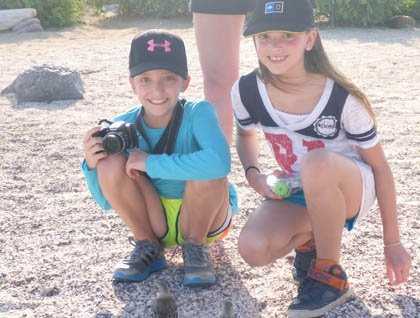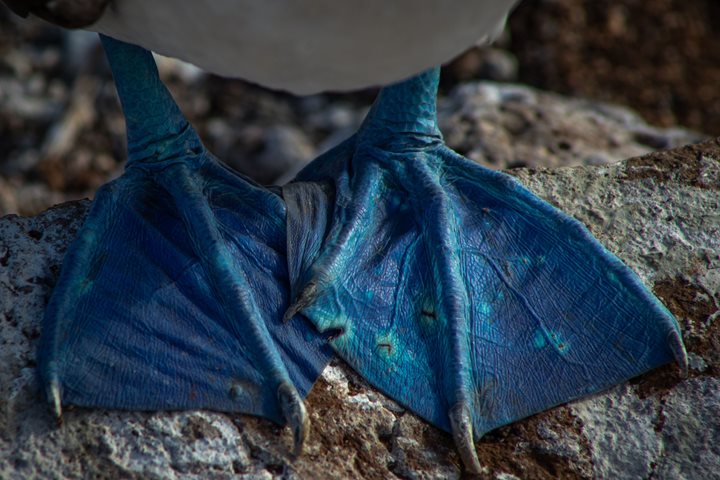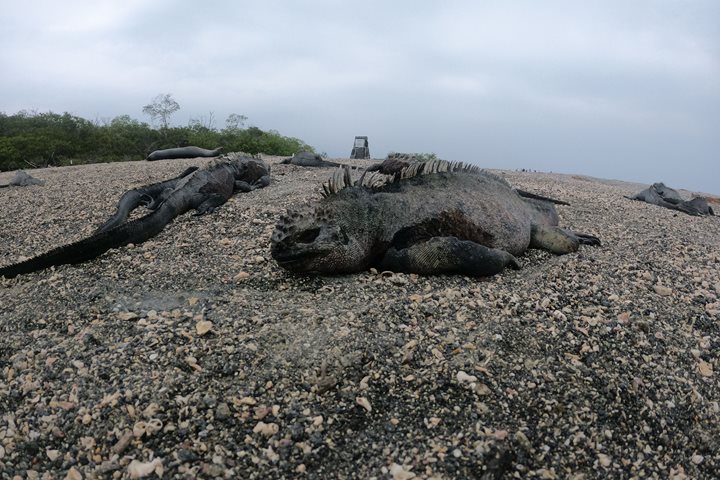This archipelago has over one hundred Islands. Some of them are millions of years old, and some other just a few hundred thousand years old. During our week of exploration, the National Geographic Islander will take us to very different islands. Some of them are barren, because their colonization is only just underway, and it may take a long time before they are colonized with different species. Some other Islands are very old, and they are almost disappearing because they have been exposed to natural forces for a long period of time.
Today, we had the privilege to explore Española Island, which is considered by geologists to be the oldest volcano in Galapagos. This fact is a very important component in the formation of new species, and the best evidence was to see some of the creatures found only on this Island, such as its mockingbird, the most colorful marine iguanas in Galapagos, the largest sea bird in Galapagos, the albatross, and the largest Galapagos lava lizard among its nine species.
After a few hours of navigation, we finally dropped anchor in Gardener Bay a few minutes before sunset. One by one we started to come out and enjoy the beauty of this visitor site. This bay is so impressive that it looks like it was taken from a hand-painted frame. Its blue crystal waters, islet formations, and its white coral beach full of endemic Galapagos sea lions was just breathtaking for everyone.
We started our morning activity with a group of kayakers, heading out to explore the island’s cliff formations and do some bird watching at the same time. Later in the morning we went deep water snorkeling. A group of beginners decided to go to the beach first and learn some snorkeling tips for future water activities during their week in Galapagos. The morning was very enjoyable and full of colors and magic.
After a typical Ecuadorian lunch and a very well-deserved siesta, our ship sailed to a different location to continue with our program for the afternoon. Punta Suarez probably has the most concentrated sea bird population in Galapagos, and we had the opportunity to enjoy and see them up close. Sometime we even had to step back, because they are just very friendly animals with no human fear.
It was like music for our ears and also our hearts—the sound of boobies, mockingbirds, sea lions, seagulls, and the waves hitting the coastal area as we headed back on board.
This was a fantastic day of exploration. We’ll treasure our good memories from the oldest island in the Galapagos.









